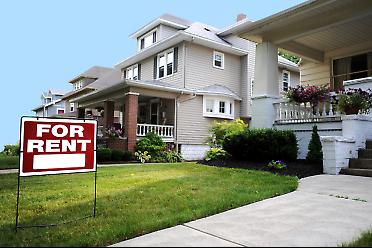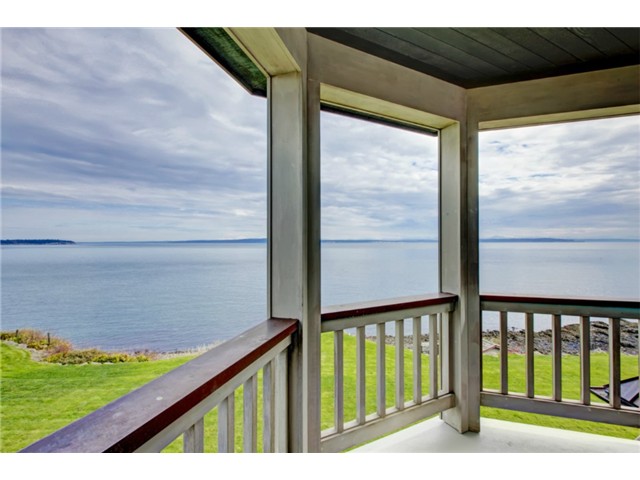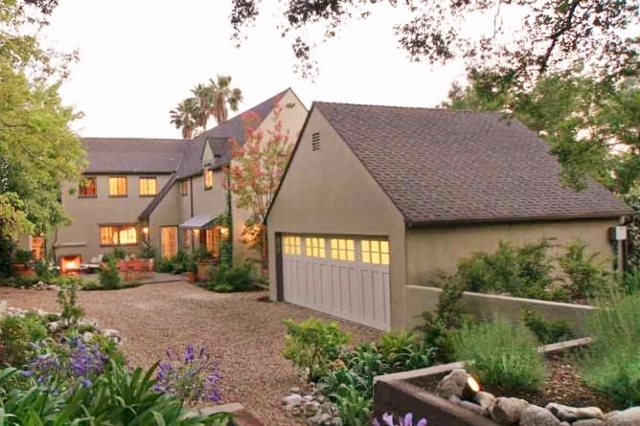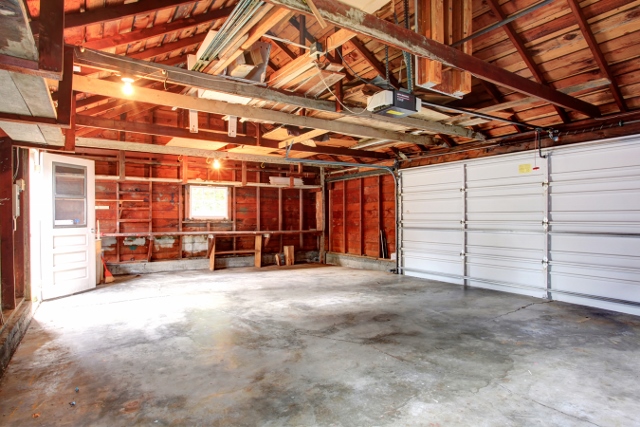Jeff Williams is a top-producing Realtor with Windermere in Tacoma specializing in the purchase and sale of historic and luxury homes. Click here to email Jeff or give him a call at 253-303-1135.

The demand for rental homes in Tacoma’s North End is high, with landlords charging as much as $1800-$2000 per month for a nice three bedroom house in a desirable location like Proctor or the Stadium District.
Many homeowners were able to secure extremely low interest rates by refinancing when the market was low, which prompts some to consider holding on to their primary residence as a rental property when purchasing their next home. Residential real estate in Tacoma’s North End is certainly a great investment. With the economy stabilizing and job growth expanding in our area, some are predicting as much as a 20% gain in market values over the next 3 years.
So whether it’s a property that you purchase specifically as a rental or a primary residence that you’ve decided to convert into a rental, it’s important to ask yourself a few questions before deciding to become a landlord.
5 Questions to Ask Yourself BEFORE Renting Your Home
1. Do you know how to screen potential tenants? Credit-worthiness? Employment and rental history? You can find out more about tenant screening at Bigger Pockets.
2. Will you allow pets? Cats? Dogs? Large? Small? Allowing pets will obviously increase your potential applicant pool, but pets can take a toll on a house which might cost you more than it’s worth in the long run.
3. If your house is located near the University of Puget Sound, will you rent to students? You may be able to earn more income if you rent by the room, but you can also expect more wear and tear on the property.
4. Have you talked to your insurance company to find out if there will be an increase in your premium if you convert to a landlord’s policy? You can find out options from our preferred insurance agent Jerry Hallman at Farmers.
5. Have you spoken with your accountant about the potential tax implications associated with owning and/or selling an investment property? Capital gains taxes are easier to avoid when selling a primary residence than they are when selling a rental property.
Another route to consider would be purchasing a property for use as a short term rental. The startup and maintenance costs (furnishings, utilities, supplies etc.) may be greater and the property will require more hands on attention, but the earning potential of a daily, weekly or monthly rental will be higher. There are a number of sites available for marketing a short term rental, including www.airbnb.com, www.homeaway.com and www.vrbo.com. Lastly, if you’re reluctant to deal with the active management of a rental property, you can always enlist the assistance of a property management company. Locally we recommend Parkwood Property Management and McNally Property Management . If you’re interested in purchasing an investment property, let us know. We’d be happy to help you navigate the waters.
Mark Pinto is a top-producing Realtor with Windermere in Tacoma specializing in the purchase and sale of historic and luxury homes. Click here to e-mail Mark or feel free to give him a call at (253) 318-0923.

The Proctor District is one of North Tacoma’s most popular neighborhoods. Historic homes, great public schools, tree lined streets, views of the water and a charming central business district are just a few of the things that make this neighborhood so special. For those who aren’t familiar with Proctor (and for those who are already fans), I thought I’d share some of my favorite things about the place we call home.
Metropolitan Market – Met Market is the undeniable anchor of the Proctor District. This upscale grocery store caters to a sophisticated palate, with many locally sourced products, an outstanding cheese department and a wine steward. Met Market could feel some heat if Whole Foods delivers on their promise to open a store in University Place, but the neighborhood feel at the Met will always be hard to beat.
Chalet Bowl – This family owned and operated 12-lane bowling alley “strikes” a wonderful balance between old school Americana and new school hip. The lanes are well maintained, the staff is extremely friendly and the weekly bargain specials are hard to resist. Two words. Glow Bowling.
Wheelock Public Library – This local library has been serving the community since 1927 and is much used and much loved by children and adults alike. An iconic bronze statue of Tacoma pioneer and early businessman Allen Mason located adjacent to the library is often whimsically decorated to befit the season.
Puget Park – Located at the corner of Proctor and N. 31st Street, Puget Park was one of the first green spaces to be donated to the city of Tacoma for public use in 1888. The park features an updated play area and a picnic-perfect grassy knoll. If you’re feeling adventurous, you can follow a trail down through Puget Gulch to the waterfront for a wilderness experience right in the heart of the city.
Blue Mouse Theater – Originally opened in 1923 and now listed on the National Register of Historic Places, the Blue Mouse is Washington State’s oldest continuously operating movie theater. A group of local activists and preservationists purchased and restored the theater in 1993. Dale Chihuly reportedly designed the blue neon mice that grace the marquis.
Mark Pinto is a top-producing Realtor with Windermere in Tacoma specializing in the purchase and sale of historic and luxury homes. Click here to e-mail Mark or feel free to give him a call at (253) 318-0923.

With market values in Tacoma’s North End on the rise, we’re often asked by our clients to “keep our eyes open” for a house exactly like theirs but with a water view. The implication being that if they found a view home that was as nice as their current residence, they would want to buy it. The follow-up question from them is inevitably, “how much more would that cost?” Well, that isn’t always an easy question to answer. When showing homes to buyers that are specifically interested in purchasing a view property, it becomes readily apparent that not all views are created equal. I did some digging and found an article published in 2011 by the Texas Association of Appraisal Districts that mirrors my experience with the Tacoma housing market. It states the following:
Market studies support the premise [that a view adds value], with one study concluding that . . . “in addition to square footage and lot size, view is the most significant determinant of home value.” A panoramic view (breadth and/or depth in aspect) tends to command the ultimate premium, . . . a near view of a prized view object is preferred over a far view, while the ability to see a far distance is prized over a vista that is foreshortened. Other things being equal, an obstructed (or keyhole) view will draw a lesser premium. A view only visible from the upper floor of a single family residence likely draws a lesser premium. A damaged view (a mountain view marred by overhead power lines or a junkyard in the foreground) will likely invoke a lesser premium. View orientation can influence value. It is said that the view from the “back” of a residence (where family rooms and patios are often located) is significant, while the view from the front door is less significant.
A study of 1984 – 1993 data from Bellingham, Washington found that a view added a 25.9% premium to home value. When the views were differentiated, however, the study findings were more informative: poor partial ocean view (8% premium), good partial ocean view (29% premium), unobstructed ocean view (59% premium), and water frontage (127% premium). (See the full study here)
I was curious to see if view homes in North Tacoma garnered this same price premium so I pulled recent sales data specific to the North End, comparing similar houses in the same neighborhood with and without views to determine pricing differentials. The exercise is a challenging one, but I was able to find three pairs of properties of the same size and condition but differing in view (see below for side-by-side comparisons). The view homes sold for 51%, 40% and 55% more than their non-view comparables for an average premium of 49%. My sample size is obviously too small to draw definitive conclusions, but I think the results do support the findings of the study discussed above. The results also echo what I always tell our real estate clients when they ask me “how much more for a view property?”… expect to pay at least 50% more for a great view property and be prepared to wait. Patience is everything.
| 7213 N. 25th Street
5 bedroom, 2.5 bath, 3,032SF Built in 1970, sold for $425,000 on 9/20/2013 |
1818 Skyline Drive
5 bedroom, 2.75 bath, 3,000 SF Built in 1965, sold for $282,000 on 12/13/2013 |
| 3009 N. 31st Street
3 bedroom, 1.5 bath, 2,006 SF Built in 1906, sold for $462,000 on 8/28/2013 View: unobstructed water view from rear |
2210 N. 29th Street
3 bedroom, 2 bath, 1,820 SF Built in 1904, sold for $330,000 on 10/23/2013 |
| 3712 N. 39th Street
2 bedroom, 1.75 bath, 1,606 SF Built in 1916, sold for $460,000 on 07/31/2013 |
3905 N. 35th Street
3 bedroom, 1 bath, 1,358 SF Built in 1922, sold for $297,000 on 8/1/2013 |
Jeff Williams is a top-producing Realtor with Windermere in Tacoma specializing in the purchase and sale of historic and luxury homes. Click here to email Jeff or give him a call at 253-303-1135.

The median sales price in north end zip codes 98403, 98406 and 98407 jumped from $212,000 in January of 2013 to $285,000 in July (a 34% increase). However, after the 4th of July, the market began to cool off. primarily due to buyer hesitancy given multiple offers on properties for sale in the spring and an increase in interest rates for home mortgages. After the slow down the median sale price had dropped to $222,000 by November.
Some neighborhoods held their gains better than others, most notably zip code 98406, but the current market as a whole looks much as it did at this time last year with respect to home values and sales activity. That’s not altogether a bad thing. A steady, measured recovery is more likely to be a sustained recovery.
Lawrence Yun, chief economist for the National Association of Realtors, predicts that strong job growth in 2014 will continue to drive the housing recovery (see the interview here). The foreclosure crisis is expected to draw to a close, and home values will continue to rise, albeit at a slower pace than they did in early 2013. Most pundits agree that mortgage interest rates, currently hovering around 4.5%, will top 5% by the end of 2014. With housing values and mortgage interest rates on the rise, housing affordability is admittedly beginning to decline. That means it could become more difficult for first time home buyers to enter the market, which could temper the recovery in some areas. The good news is that according to Zillow, an online real estate housing database, the Seattle metro area is predicted to be one of the hottest housing markets in the country in 2014,
Mark Pinto is a top producing Realtor with Windermere specializing in historic and luxury homes located in Tacoma, Lakewood and Gig Harbor. For further information contact Mark at markpinto@windermere.com.

Homeowners in Tacoma’s coveted North End really like their garages, whether they’re attached or detached, one car or two. Some people use their garages as workshops. Others use them for overflow storage. Some people actually use them the old fashioned way – for parking cars. Regardless of how it’s used, the presence of a garage in Tacoma’s North End definitely adds value to a property. People love the North End of Tacoma for its character Victorian and Craftsman homes and its quaint tree-lined streets, but many of the older homes weren't built with a useable garage. Some of the garages that were built are narrow, single car structures. Others offer tandem parking in the basement, while some of the grander homes built at the turn of century have garages that were originally carriage houses.

If a home has no off-street parking whatsoever, it can be a deal-breaker for a lot of buyers, regardless of their price range. A carport may be acceptable, but that really depends on the design and security that the structure offers. The bottom line is that off-street parking seems to be the bare minimum that many buyers will accept, whether it's a garage, a carport, a driveway or just a parking pad. If it's a garage, the bigger and better it is, the greater the added value. Several of our listings have sold quickly in large part because they’ve had a good sturdy two-car garage. Other listings have languished if they’ve lacked a garage.
If you're buying or selling a home in the North End of Tacoma, you should evaluate the garage (or lack thereof) and make sure that the parking accomodations are factored into the purchase price. If you plan to make home improvements that have a good rate of return and you don’t already have a garage, consider adding one. We’ve seen appraisers add as much $30,000 for a garage if a comparable sale doesn't have one, depending on the size and useability of the structure. There are obviously guidelines and requirements that you’ll need to follow, but much of the investment that you make in a new garage will come back to you at the time of sale. For additional information about adding a garage in Tacoma’s North End, visit the city’s Planning and Development Services Department website.
